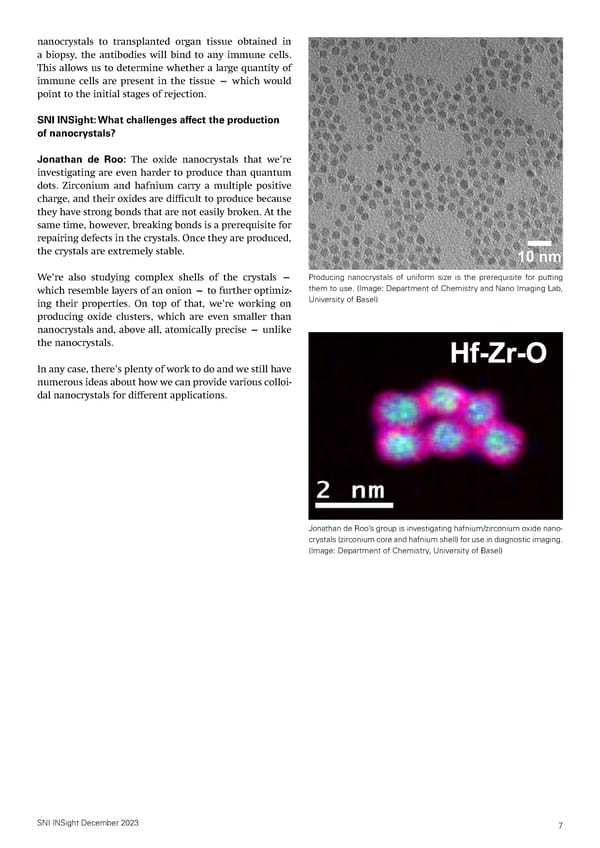nanocrystals to transplanted organ tissue obtained in a biopsy, the antibodies will bind to any immune cells. This allows us to determine whether a large quantity of immune cells are present in the tissue — which would point to the initial stages of rejection. SNI INSight: What challenges affect the production of nanocrystals? Jonathan de Roo: The oxide nanocrystals that we’re investigating are even harder to produce than quantum dots. Zirconium and hafnium carry a multiple positive charge, and their oxides are di昀케cult to produce because they have strong bonds that are not easily broken. At the same time, however, breaking bonds is a prerequisite for repairing defects in the crystals. Once they are produced, the crystals are extremely stable. We’re also studying complex shells of the crystals — Producing nanocrystals of uniform size is the prerequisite for putting which resemble layers of an onion — to further optimiz- them to use. (Image: Department of Chemistry and Nano Imaging Lab, ing their properties. On top of that, we’re working on University of Basel) producing oxide clusters, which are even smaller than nanocrystals and, above all, atomically precise — unlike the nanocrystals. In any case, there’s plenty of work to do and we still have numerous ideas about how we can provide various colloi- dal nanocrystals for di昀昀erent applications. Jonathan de Roo’s group is investigating hafnium/zirconium oxide nano- crystals (zirconium core and hafnium shell) for use in diagnostic imaging. (Image: Department of Chemistry, University of Basel) SNI INSight December 2023 7
 SNI INSight December 2023 Page 6 Page 8
SNI INSight December 2023 Page 6 Page 8